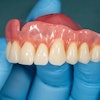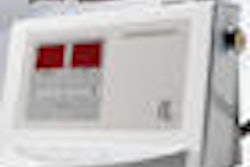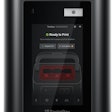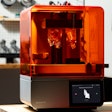A fluorescence-based dental camera developed by a German company demonstrated high reproducibility and good diagnostic performance in detecting occlusal caries, according to researchers from Philips University of Marburg (Odontology, January 2011, Vol. 99:1, pp. 55-61).
The VistaProof intraoral fluorescence camera (Dürr Dental) uses LEDs to project violet light onto the tooth surface. When illuminated by light at this wavelength, caries-producing bacteria appear red, while healthy enamel appears green. When used in conjunction with the Dürr DBSWIN software, the attached computer monitor displays the lesions and healthy enamel, and provides numerical information on caries activity.
For this study, two examiners with different levels of experience in cariology (one experienced dentist, one final-year dental student) used the VistaProof camera to examine the occlusal surfaces of 53 teeth (99 investigation sites). The teeth were then serially sectioned and assessed for lesion depth.
The intraclass correlation coefficients for inter- and intraexaminer reproducibility for the fluorescence-based exams were 0.76-0.95. There was a significant correlation between the fluorescence and histological examinations for both examiners (p < 0.01). When comparing the areas under the receiver-operating characteristic curves, the researchers found no significant difference in the performance between the examiners (p = 0.52 at the D1 threshold, p = 0.81 at the D3 threshold).
"Novice and experienced examiners were able to apply this system as a supportive device for caries diagnostic and monitoring purposes," the researchers concluded.
In a related study published last year in Lasers in Medical Science (January 28, 2010), the VistaProof camera compared favorably with the Diagnodent and Diagnodent Pen in detecting caries in primary teeth.



















